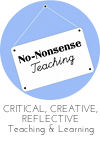It's back to school time. You are standing in the middle of your classroom deciding how to decorate and organize your walls for the first day of school. You have already 'walked the walls', taken down any commercial products and are starting with a blank canvas. Since walls are considered a learning support tool, it is important to have a clear plan for the organization. The suggestions below will help you create your first day of school classroom wall plan:
1. Integrate content subject areas into language arts and math.
The amount content you integrate is directly related to your wall space. The more you integrate, the better. For example, the integration of social studies and science into language arts and math allows you to devote most of your wall space to language and math. This will also demonstrate to children that language arts and math are not separate from other subject areas. Hopefully most of your classroom wall space will be devoted to language arts and math.
2. Plan how you intent to teach. Your walls should support how and what you are/have been teaching. For example: the walls around your gathering and teaching area should reflect currently taught content. Hang your modeled/shared pieces, learning goals, criteria and other support anchor charts here. When you are ready to move on to a new concept, choose the important pieces (e.g. criteria and examples) and move them to their permanent home on another wall. This other wall will serve as a permanent visual reminder of past learning. This wall will be helpful as children continue to use these strategies throughout the year.
3. Plan how children will use the walls. Children will naturally use the walls in different ways than your organizational plan. For example, locate your word wall at the font of the room, eye level. This may not be the most convenient location for you however, most children will not use a word wall if they have to turn their heads more than 90 degrees. They are also less likely to look above a chalk/white board or look around their peers if it is located below the board. If you want children to use the walls as support, you need to take into consideration their learning perspective.
4. Create a list of learning supports you want posted on your wall and visualize how much space they require for display. Although these charts will not be posted immediately, you will still have to plan well ahead for the space you require. For example, you might plan to use a sentence starter chart, write vocabulary on your windows, post criteria, learning goals etc. Visualize what your walls will look like in 8 weeks time. Have you planned where all of these charts will go? Don't get caught spending your valuable time constantly re-arranging the organization of your walls because you did not planned ahead.
5. Once you have planned and visualized, put up your borders, backings and titles for each section. You are now finished organizing your walls for back to school.
6. Be comfortable with fairly bare walls for the start of school. Effective learning tools need to be created with children and are built over time. It no longer makes sense to post learning supports before children have begun school.
September 03, 2014
Classroom Organization: Back to School Classroom Walls
CATEGORY:
Classroom Management & Organization
Subscribe to:
Post Comments (Atom)























No comments:
Post a Comment